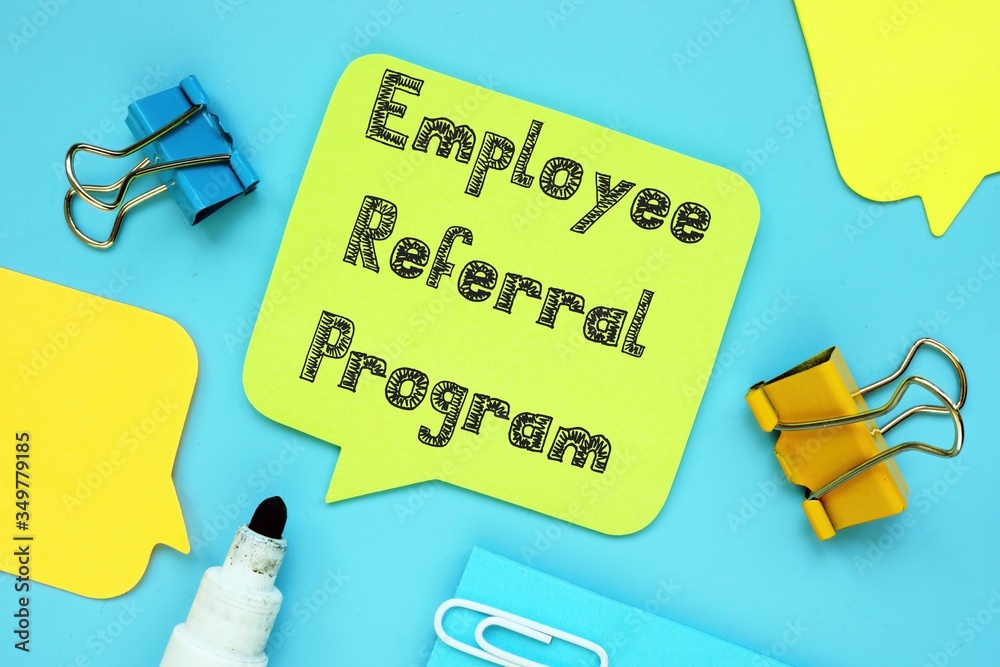In today’s ultra-competitive job market, it can be incredibly tough to find the right person for your open position. The pressure’s on: you need someone with the right skills and the right experience who’s also the right cultural fit—and tons of other companies are looking for that person, too. So how do you stand out among job postings and at networking events?
The answer’s simple: employee referral programs. You know that your employees know the market really well. Referred candidates often come with that built-in endorsement from trusted employees, which can lead to a better cultural fit and a longer-term relationship. Referral programs also accelerate the hiring process—instead of weeding through dozens of mismatched applicants and slogging through your funnel, you can fast-track people. Referrals can be less expensive, since they reduce the need for external recruiters and minimize fees for job boards, college conferences, or networking events. And employees hired through referral programs often already have an understanding of the company culture, since they know someone who works there, which can lead to higher retention rates.
The problem? That simple answer isn’t always so simple. In fact, employee referral programs can get sticky, expensive, and much more problematic than you intended. You want a program that helps you fill open spots, not one that takes up even more of your time. The key to an effective, successful referral program lies in its simplicity, fairness, and alignment with your overall hiring goals.
To maximize the advantages of employee referral programs, there are a few do’s and don’ts you want to be aware of.
Do: Offer Attractive Incentives.
If you want employees to participate, there needs to be something in it for them. Monetary bonuses, extra benefits like PTO days, or recognition at company events can be great motivators. You want to encourage employees to really rack their brains and not be afraid to put a name forward. While this might feel like an added cost, remember that employee referral programs do tend to bring overall costs down, meaning that it might be a worthwhile investment in the long run.
Don’t: Overlook the Importance of Onboarding.
Just because someone was a referral doesn’t mean they don’t need to go through the proper onboarding channels. Even the most promising referrals can falter if they don’t receive the right onboarding that the position requires. They need to receive the same training once they’re on the job that they would receive otherwise.
Do: Ensure Fairness in the Process.
Do your best to avoid any bias and embrace inclusivity. All employees should have an equal opportunity to participate in a referral program, no matter whether they’re remote or in-person, or where they fall in the company’s hierarchy. Otherwise, it could seem like you’re giving special privileges to one group of employees over another. You don’t want to favor certain individuals and leave others in the dust. Once you do have referrals, treat them with the professional respect they deserve—i.e.., don’t go to the person who referred them and ask what the downsides of that person are. You can discover yourself through an effective interview process.
Don’t: Skip Important Steps in the Funnel.
Employee referral programs can absolutely speed up the recruitment process. But that doesn’t mean you jump over major steps. Candidates still need to be vetted, which means taking a look at their resume, interviewing them thoroughly, and perhaps even giving them some kind of test or job tryout. You don’t want to assume that just because someone’s a referral you don’t need to vet them as properly as you would other candidates. While you may be able to combine steps or do them in a shorter time, you still need to assess each individual referral.
Do: Set Clear Criteria for Particular Roles.
Employees shouldn’t simply be told, “we’re hiring! Tell your friends!” They need the proper information in order to make a solid referral. Employees should be told what positions are available, what the expectations are for those positions, and what requirements the roles absolutely need to have.
Don’t: Neglect Conflicts of Interest.
Referrals can be great, but they can get muddy when it comes to conflicts of interest. If someone refers a romantic partner, for instance, your company might have very strict rules on whether or not that’s allowed. Furthermore, people with personal relationships, like roommates or siblings, could get sticky when it comes to workplace conflict. It’s up to your company to craft your own ethical standards, but it’s definitely something to consider and make clear when implementing an employee referral program. Lastly, make sure your employees aren’t working to poach other employees—you don’t want to get in any kind of legal trouble with non-compete agreements, and you don’t want to get a reputation in. your industry for employee-stealing. You need to make sure that you’re respecting privacy laws, avoiding discriminatory practices, and maintaining confidentiality regarding candidates’ personal information.
Do: Remind Employees Often.
Telling employees about the referral program once or twice isn’t good enough. Every time you have a new job posting, you should be reminding employees about the referral program and what they can receive for a solid referral. This can be advertised through human resources newsletters, company-wide e-mail blasts, or other forms of communication that will ensure every employee gets the message. You could also get employees’ opinions on what benefits would most entice them to participate!
Don’t: Neglect to Regularly Update and Evaluate Your Referral Program.
If you aren’t getting enough worthwhile referrals, it might be worth sitting down and taking a look at the overall effectiveness of your program. Are your incentives good enough? Do people have a clear understanding of what your requirements are for referrals? Make sure you’re collecting data on the success rates, quality of hires, and overall satisfaction of employees who participate. Then, you can use this valuable information to make data-driven improvements and adjustments to your referral program.
Claire Swinarski is a Contributing Editor at HR Daily Advisor.

